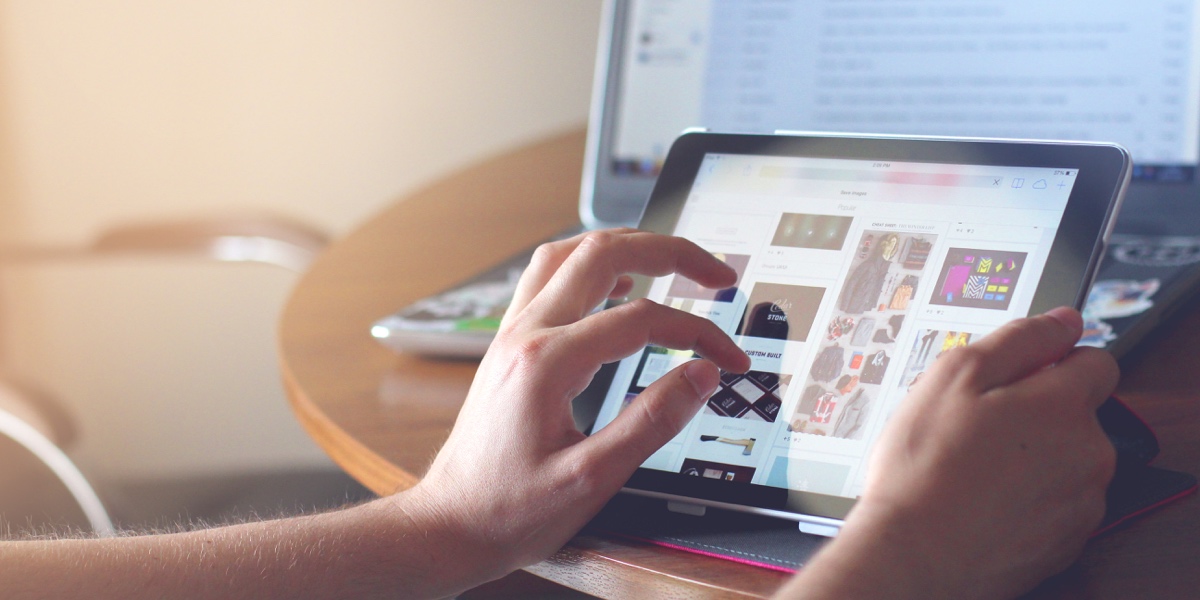The focus of design is rapidly changing. Design used to be thought of as something purely employed for aesthetics, but it’s taking on a much larger role with its main goal of making everyday things usable. As Brenda Laurel, PhD says eloquently, “Design isn’t finished until someone is using it.”
Who that someone is matters a great deal when it comes to designing successful and engaging products. Without understanding who will use a product and how they’ll use it, it’s less likely that you’ll create something people will actually enjoy or want to use.
User-centered design (UCD) helps designers gain those crucial insights into who their users are and how they use the product—then assists them in incorporating that knowledge into their design process. By employing UCD principles, organizations have a better chance at living up to their customers’ expectations and putting out lucrative, user-friendly products.
Here, we’ll take you through the basics of user-centered design: what it is, how it works, and the benefits of adopting user-centered design practices. We’ll also share tools and resources that are relevant to each phase.
- What is user-centered design?
- How does the user-centered design process work?
- What are the benefits of user-centered design?
- Key takeaways
Ready to dive into user-centered design? Let’s go!

Photo by Taras Shypka on Unsplash
1. What is user-centered design?
User-centered design is an approach to design that puts users’ needs front and center and follows an iterative design process that focuses on the user’s needs every step of the way. This means the design process is being influenced and guided by the user’s behaviors, values, and expectations from beginning to end.
It’s important to note that user-centered design is not exactly the same as design thinking. Learn more in this guide: User-Centered Design vs. Design Thinking—What’s the Difference?
In UCD, satisfying the user’s needs and responding to their feedback takes priority. Every design decision is judged on the value it has to the user and how efficiently it will help them meet their goals.
There are five main principles that guide user-centered design:
- Early involvement of end-users in the design process
- A clear understanding of the context of use and user needs in an attempt to align them with overall business requirements
- Regular collection, analysis, and incorporation of user feedback through the product design cycle
- Employing a user-centric approach to product development and delivery procedures
- Utilizing an iterative design process with a continual goal to improve user experience
User-centered design requires empathy, creative confidence, and the ability to learn from failure and adapt. The UCD process helps designers create emotionally impactful products that leave users feeling satisfied.
2. How does the user-centered design process work?
Now that we’ve laid out what user-centered design is, let’s take a closer look at how the process works. The UCD process typically consists of four steps:
- Understanding the user and context of use
- Specification of user and business requirements
- Creation of design solutions
- Evaluation of designs
Let’s look more closely at each of these steps.

Photo by Gabriella Clare Marino on Unsplash
Step One: Understanding the user and context of use
This is where designers research who their users are, what problems they have, and contextual considerations that motivate or influence their use of the product. Designers determine what draws the user to the product in the first place and how they (would) interact with it.
Step Two: Specification of user and business requirements
This step establishes why the design is beneficial for both the user and the business and the problems the design is solving. At this point, designers and stakeholders are finding what metrics to use for measuring business success (ie. expected revenue, ROI) and what success for the user looks like.
In this phase, it’s helpful to have a good understanding of UX strategy, which helps to build a bridge between user needs and goals and those of the business.
Step Three: Creation of design solutions
Next in the UCD process is the creation of potential solutions for the established problems. This is where the bread and butter of design occurs and contains processes like storyboarding, journey mapping, wireframing, designing mockups and user flows, testing out different UI elements, as well as determining effective information architecture.
Step Four: Evaluation of designs
Once the design team has come up with some possible solutions, it’s time to evaluate the effectiveness of their creations against the user and business requirements. Usability testing (ideally with actual users) is the most vital tool in this phase to determine how well the designs are performing.
Some questions to answer during this phase are; What went well? What went poorly? How did our users respond? How can we improve?
It’s rare for a product to meet all the predetermined design goals and requirements on the first go-around. In fact, it may take several rounds of the UCD process for designers to come up with a successful version that fulfills both business and user goals. That’s why UCD is an iterative process. Once the process is completed, the next course of action is to go right back to step one, this time with all the knowledge gained from the first design cycle.
If you want to learn more about how to do user-centered design, check out our guide: User-Centered Design: A How-To Guide.

Photo by MING Labs on Unsplash
3. What are the benefits of user-centered design?
Investing in such an iterative design process like UCD may seem time-consuming and costly. Companies will have to fund lots of user research, multiple usability testing sessions, and find the resources necessary for re-designs and revisions. However, the benefits of UCD pay off immensely in the long run. Here’s a quick look at how.
Cost and risk reduction
Working closely with your users helps guarantee you’re creating products they want to use and can interact with intuitively. Therefore, companies will be less likely to have to spend time and money redoing things or helping their customers learn how to use their products.
Deeper sense of empathy
Having a greater sense of empathy assists designers in creating products that have a serious impact on people’s quality of life. Understanding and learning about your users with the UCD process can help organizations produce ethical, accessible, inclusive, and potentially life changing products.
Learn more about ethical design here.
Higher customer satisfaction
The UCD process forces companies to keep the needs and wants of their users at the forefront of their product designs. Keeping this user-centered mentality can increase customer satisfaction leading to increased user engagement and higher overall sales.
Increased productivity
UCD includes the user in the design process from start to finish. Therefore, there is less of a chance that designers will have to make guesses about design choices or spend time on unnecessary and undesired product features.
Involves all team members
Utilizing the UCD process keeps all company members on the same page and offers stakeholders a clear view into project progress. Involving a team of people from different backgrounds and disciplines can help create more useful and usable products.
4. Key takeaways
Product development consists of a large amount of difficult and success-defining decision making.
User-centered design takes the guesswork out of the design process by eliminating personal-bias and focusing on exactly what a company’s target audience is looking for in a product.
Prioritizing the users’ goals and expectations from the beginning to the end of product creation can help organizations put out engaging, sustainable, and highly desirable products.
Learn more about how to create user-centric products and experiences with these articles:
